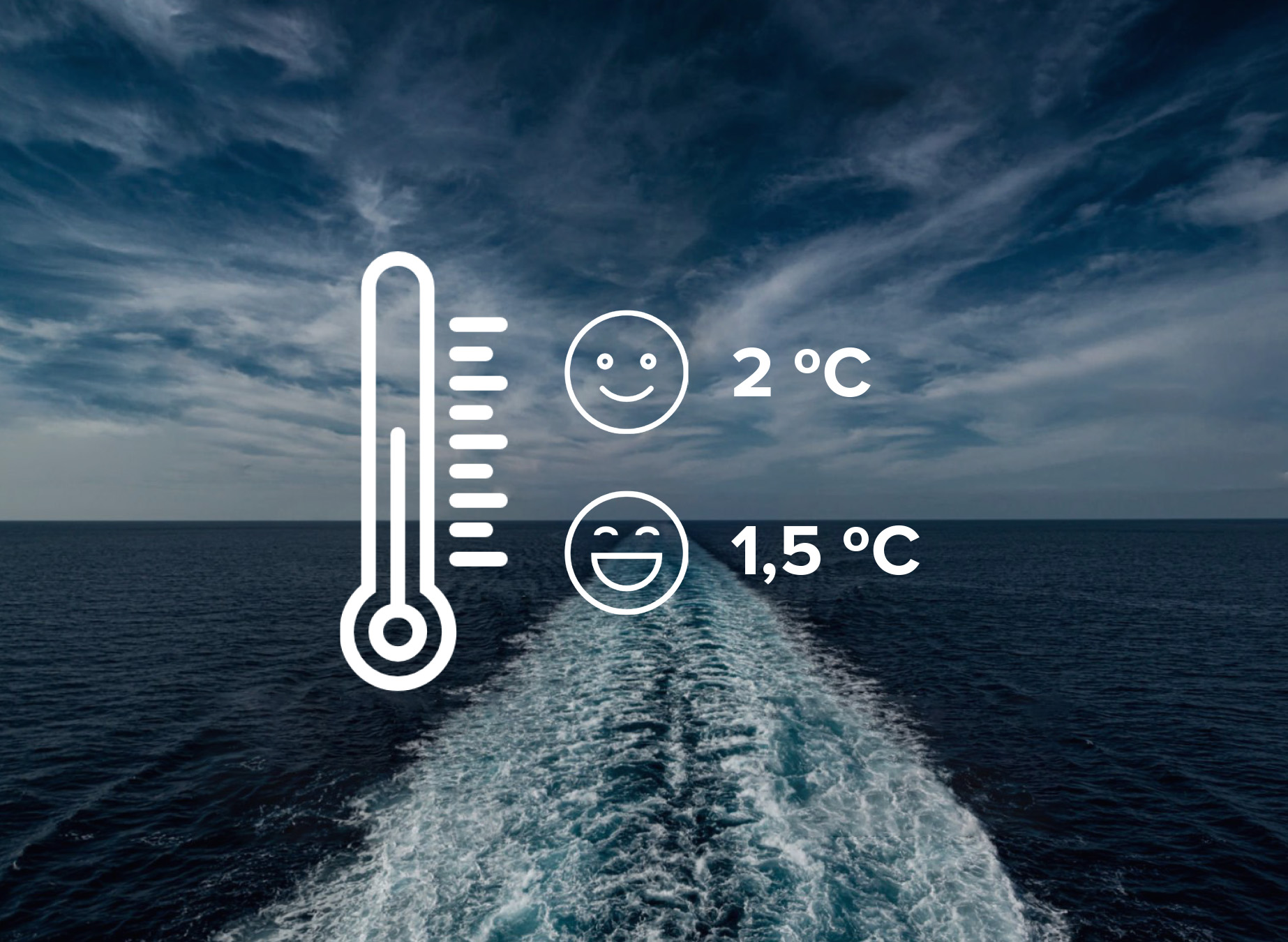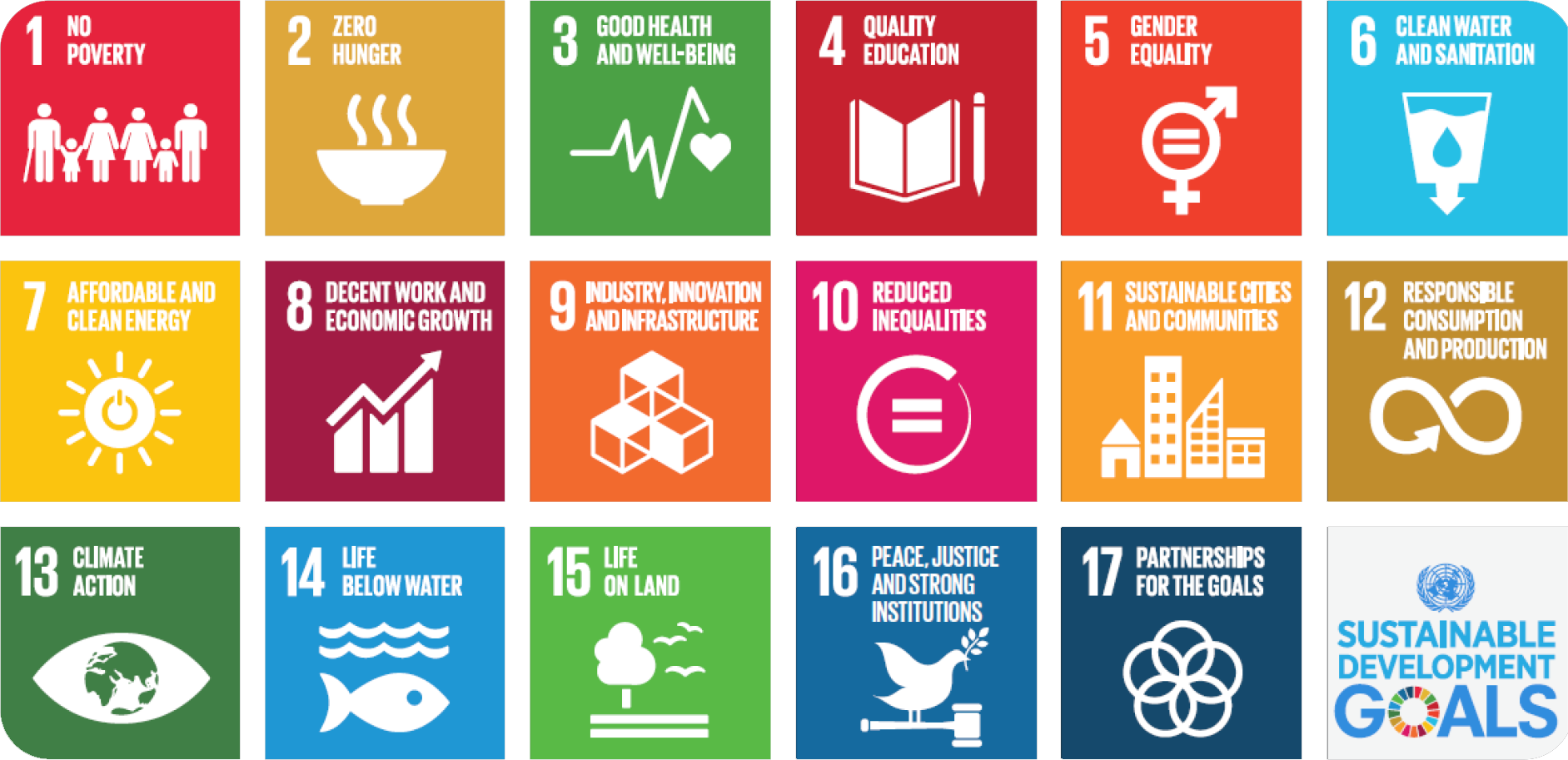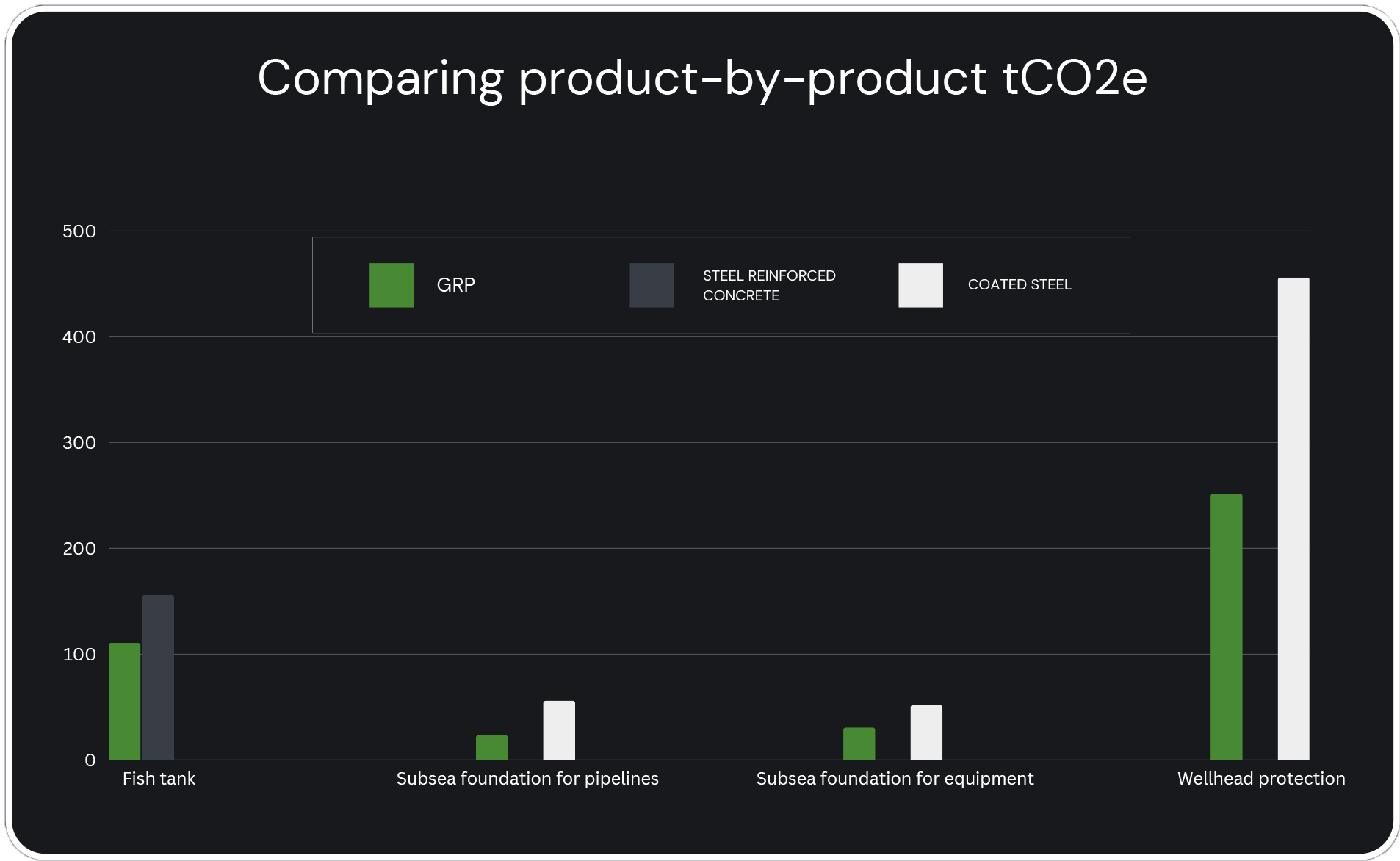Background
The world has significant challenges in the years to come, and major changes are necessary, to meet the Paris Climate Agreement and achieve the UN ́s sustainability goals (SDGs).
The world has significant challenges in the years to come, and major changes are necessary, to meet the Paris Climate Agreement and achieve the UN ́s sustainability goals (SDGs).

Paris Climate Agreement
To tackle climate change and its negative impacts, world leaders at the UN Climate Change Conference (COP21) in Paris reached a breakthrough on 12 December 2015: the historic Paris Agreement.
Main goal to guide all nations:
Substantially reduce global greenhouse gas emissions to limit the global temperature increase in this century to 2 degrees Celsius while pursuing efforts to limit the increase even further to 1.5 degrees.
UN ́s sustainability goals (SDGs)
the 17 Sustainable Development Goals (SDGs) are an urgent call for action by all countries. They recognize that ending poverty and other deprivations must go hand-in-hand with strategies that improve health and education, reduce inequality, and spur economic growth – all while tackling climate change and working to preserve our oceans and forests.
The SDGs require joint efforts from governments, civil society, the private sector, and academia.
The business sector is crucial to achieving these goals.
Innovation and technology development are one of the keys to the green shift, and the private sector is a key force.
As a solution provider with engineering resources and manufacturing plants, CSUB has obligations and opportunities in this context.
We will work actively to improve our own footprint, and at the same time develop environmentally friendly products with our partners.

The sustainability strategy shall clarify and guide the CSUB’s work with sustainability. It shall:
The strategy shall be the foundation for strategic decisions and ongoing operational work. It must be seen
in connection with other governing documents.
Sustainability:
In 1987, the Brundtland Commission’s final report, Our Common Future, was published, which had a decisive impact on public policy on environmental issues in much of the world. Sustainable development was the new term in this report, which described how the environment, economy and social development were closely linked.
The main message was that the international community must align itself and do what is required to ensure that the needs of today’s people are met without weakening the foundations for future generations to meet their needs.
The three-part bottom line
The triple bottom line is that the company should not only measure success in how much money you make, but that companies must take on a greater responsibility.
People (social conditions) – Pay attention to the local environment and the community your company is a part of. Define which social, cultural and political issues are relevant to their core business.
Planet (environmental responsibility) – Ensure that your company’s activity takes the environment into account and that you are constantly working on improvements.
Profit (economic success) – Ensure you have a long-term perspective, remain competitive and create economic growth.
ESG:
ESG stands for ”Environmental, Social and Governance”, and represents a holistic approach to sustainability. ESG criteria constitute a three-part focus on non-financial considerations, which investors and other stakeholders use to assess and rank the company’s ability to safeguard climate/environment, social conditions and rights, and responsible and ethical business governance.
CSUB supports the UN Sustainable Development Goals (SDGs), a collection of 17 global goals set by the United Nations General Assembly in 2015.
We have prioritized 4 SDGs where we believe we can have the most impact and where we seek to contribute positively. In 2023, we will review this prioritization to make sure the goals are aligned with the KPIs, targets and material issues for CSUB.
Goal 9: Industry, innovation, and infrastructure
Build resilient infrastructure, promote inclusive and sustainable industrialization and foster innovation.
CSUB aim to develop cost effective aqua solutions with significant positive environmental impact. Further, design and deliver renewable energy solutions projects such as tidal power plants, floating wind and floating solar.

Goal 12: Responsible consumption and production
Ensure sustainable consumption and production patterns.
Seek partners and investigate possibilities for re-cycling of our material.
Over time, reduce our total amount of waste, including the hazardous waste, and increase the share of recycled waste.
Invest in automated processes to be more effective and climate friendly, and thus strengthen our competitiveness in the longer term.
CSUB shall strive for green procurements.
Goal 13: Climate action
Take urgent action to combat climate change and its impacts.
CSUB will continue to develop products with lower CO2 footprint than alternatives in concrete/steel. Having 3 fabrication plants, improvements regarding emissions shall have a high focus in the
planning work.

This figure illustrates tCO2e for 4 different products using different materials. Source: 3. Party report from CEMSYS.com AS. Project description in Appendix 1.
Goal 14: Life below water
Conserve and sustainably use the oceans, seas, and marine resources for sustainable development.
Most of our projects are RAS (Recirculating Aquaculture Systems) – used for fish production. The main benefit from RAS is the ability to reduce the need for fresh clean water while still maintaining a healthy environment for the fish. (Ref. appendix 2)
CSUB is involved in multiple developments concepts – where we contribute to develop closed pools for fish farming at sea, which eliminate fish-escape and sea lice. Containing and processing feed and septic is also enabled by these concepts.
CSUB’s fish tanks are certified according to NS 9416, a regulation with requirements to technical standards for land-based aquaculture facilities to prevent the escape of fish from land-based aquaculture facilities.

In 2021 CSUB became a member of the United Nations Global Compact. This is a voluntary commitment to adopt sustainable and socially responsible business policies and annually report on their implementation (CoP: Communication on Progress).
Our Environmental Management System is certified according to 14001.
Our stakeholders are increasingly concerned with sustainability. Our most important stakeholders are:
Materiality Assessment
CSUB’s sustainability strategy is guided by a materiality assessment to ensure we prioritize the risks and opportunities that are of greatest importance to our stakeholders, as well as those that have a material impact on our business.
The sales department has contributed with signals from customers, and CEO and CFO has communicated priorities from the board and banks.
A survey among CSUB employees regarding sustainability has been conducted. This assessment work has concluded with the following significant subjects:
Be the globally preferred partner for composite solutions in multiple sectors.
We reduce cost and carbon footprints through better solutions in composite materials.
Our word is our bond.
We act with agility.
We treat everybody with respect.

Develop cost effective floating aqua solutions.
Develop or be a partner in development of green energy projects.
Implement automation in some of our production processes.
Be a partner vs. end-of-life handling of our material.
Reduce our waste/increase share of the recycled fraction of our waste.
Focus on green procurements.
Increase the proportion of climate-neutral production.
Develop products with lower CO2 footprint than alternatives in concrete/steel.
Be an industrial partner in the development of RAS technology.
Make efforts above expected to make safe working place and a good work environment.
Support activities in nearby society’s, typical local sports, and culture associations.
Strategy-goal achievement plan:
The plan will be available in a separate document.
Based on the general objectives above, short-term, and long-term sustainability goals will be defined. Target date: 31.03.2023.
QHSE was (in the start-up phase Q2-2022) responsible for this document. This document shall have an annual update and be approved by the board.
All process owners are responsible for implementing of the strategy in governing documents. Further they are responsible for operationalizing the strategy in action plans.
The board: responsible for guidelines and strategies.
The Management: responsible for implementation of the guidelines/strategies.
The Sustainability Committee (not yet appointed) will be responsible for a follow-up of the strategy and conduct meetings and discuss current issues, exchange information and coordinate measures.
A sustainability report shall be issued annually. Format and first submittal date not yet decided.

UN global compact report ESG Report to owners. (Livonia Partners ESG Questionnaire).
Monthly report
Report to Board meeting
